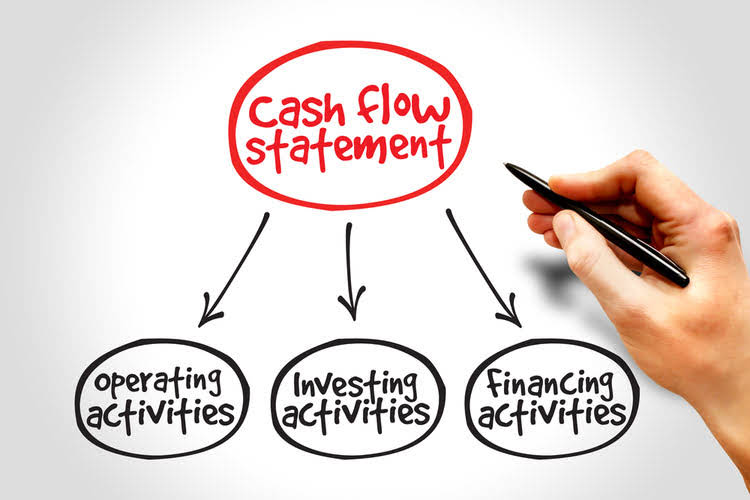
If your spending falls into one category, look for a card like Shopify Credit that gives cash back on your top spending category. Here are a few basic steps to set up an effective accounting system for your small business. Small business accounting can seem overwhelming, especially when you’re starting out. But, it’s one of the most important parts of running a successful business. At the end of the monththey received a bank statement showing all transactions for that month. Thismeant Accounting For Architects that they had to understand Accounts Payable Procedures so they didn’t fall behind on payments and have their trading accounts suspended or closed.

What you need to set up small business bookkeeping
FreshBooks has countless features for small business owners looking to update their accounting process, saving more time and money. These features include business expense tracking, time-saving invoice generation and sending tools, project management capabilities, and bookkeeping services through Bench. Overall, accounting software is one of the best ways for small businesses to make their accounting process more efficient, flexible, and simple. Bookkeepers are financial professionals who document the financial accounting and records of a business. Bookkeeping is the regular practice of updating a company’s financial records to reflect all financial transactions. Once you’ve figured out your ideal accounting method, start by creating a balance sheet, which you will use to record and track equity, liabilities, and assets.
Coordinate with a tax specialist

You’ll save time chasing receipts, protect yourself from costly errors, and gain valuable insights into your business’s potential. Bookkeeping software helps you prepare these financial reports, many in real-time. This can be a lifeline for small-business owners who need to make quick financial decisions based on the immediate health of their business. Now that you’ve balanced your books, you need to take a closer look at what those books mean. Summarizing the flow of money in each account creates a bookkeeping 101 picture of your company’s financial health.
Small-Business Bookkeeping Basics
- Your new business idea has you excited, but have you spent much time thinking about how you will manage your business finances?
- If you look you look at the format of a balance sheet, you will see the asset accounts listed in the order of their liquidity.
- If you’re doing simple bookkeeping for a small business or you’re operating a one-person business, applying the cash basis of accounting is ideal.
- It may seem complex at first, but it ensures accuracy and shares insights into your financial health.
- Visit SBA.gov to find out more about how small businesses can stay legally compliant.
- Mike and Carli met with their bank representative to get the right types of bank accounts set up for the business.
Also, because your profit goes on your personal tax return you will probably pay a higher tax rate than with a legal business which receives lower tax rates or special deductions. After you have a bookkeeping system in mind, the next step is to pick an accounting software. Spreadsheets, such as Microsoft Excel, can be used for simple bookkeeping. More commonly, entrepreneurs use comprehensive accounting software like QuickBooks that can handle a larger volume of transactions and provide a deeper analysis. QuickBooks Live Expert Assisted can help you streamline your workflow, generate reports, and answer questions related to your business along the way. One of the most important aspects of financial transactions is recording them accurately.

Accrual basis accounting records those invoices and bills even if the funds haven’t been exchanged. Generally, accrual basis is the recommended accounting method and more aligned with generally accepted accounting principles. Cash basis accounting records transactions when money changes hands. This method doesn’t record invoices or your company’s outstanding bills until they’ve been paid. Accounting software makes it possible to do much of this on your own, though you may decide to outsource some basic bookkeeping tasks to an online bookkeeping service as your small business grows. It may seem complex at first, but it ensures accuracy and shares insights into your financial health.

More Small Business Accounting Resources
- This method is the best way to keep track of asset and liability accounts.
- Expand your bookkeeping knowledge by brushing up on the most common bookkeeping errors (and how to avoid them).
- Most accounting software will automatically import your bank data so you don’t have to manually enter and organize each transaction.
- For LLCs and corporations, a separate business credit card is required to keep personal and business finances separate.
- Accrual basis accounting records those invoices and bills even if the funds haven’t been exchanged.
This involves keeping track of all the money that comes in and out of a business. Inventory is the stock of goods a business has on hand or in transit, waiting to be sold. The value of inventory can significantly impact a company’s financial statements, so accurate tracking and management is vital. Your accounting ledger serves as the hub for all your financial information—in particular, all your accounts and transactions.
- Before selecting an accounting method you must understand the difference between accounting and bookkeeping.
- The income statement is developed by using revenue from sales and other sources, expenses, and costs.
- At the end of the appropriate period, the accountant takes over and analyzes, reviews, interprets and reports financial information for the business firm.
- Your personal assets however are not protected from lawsuits arising from your work or outstanding debts.
- To uncover errors, check whether you forgot to record an entry in either column of your accounting ledger.
- It all begins with getting your accounting software set up correctly.
- A chart of accounts is a comprehensive list of all your business accounts, to record transactions.
These accounts and their sub-accounts make up the company’s chart of accounts. Assets, liabilities, CARES Act and equity make up the accounts that compose the company’s balance sheet. You also have to decide, as a new business owner, if you are going to use single-entry or double-entry bookkeeping.
